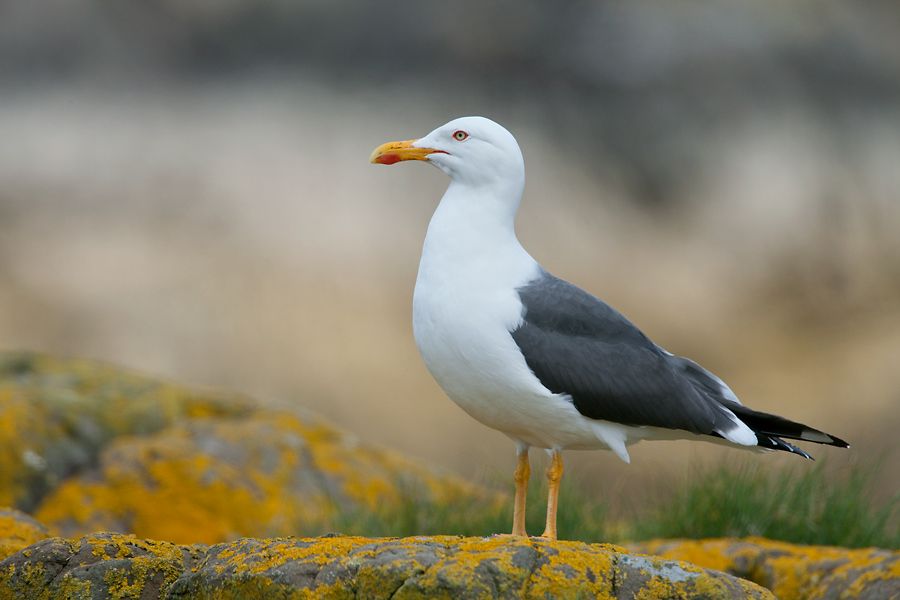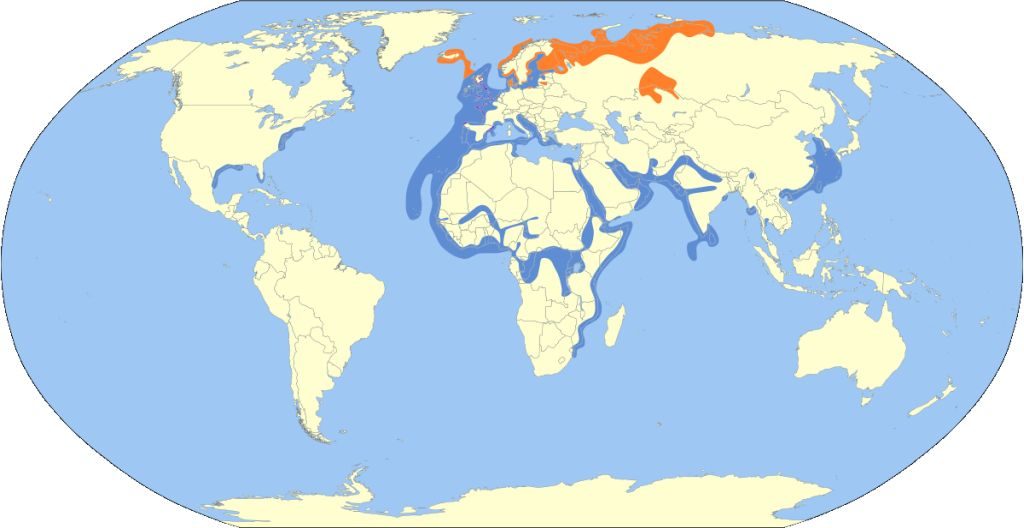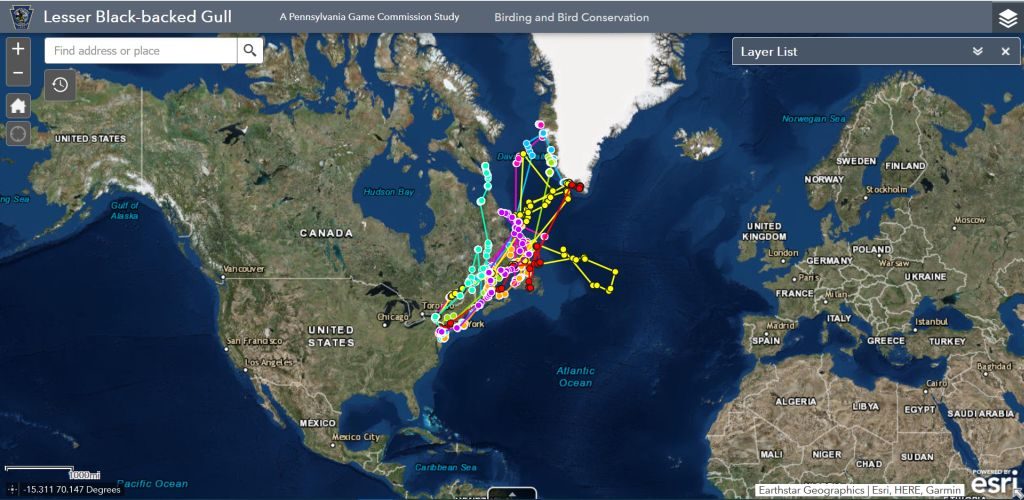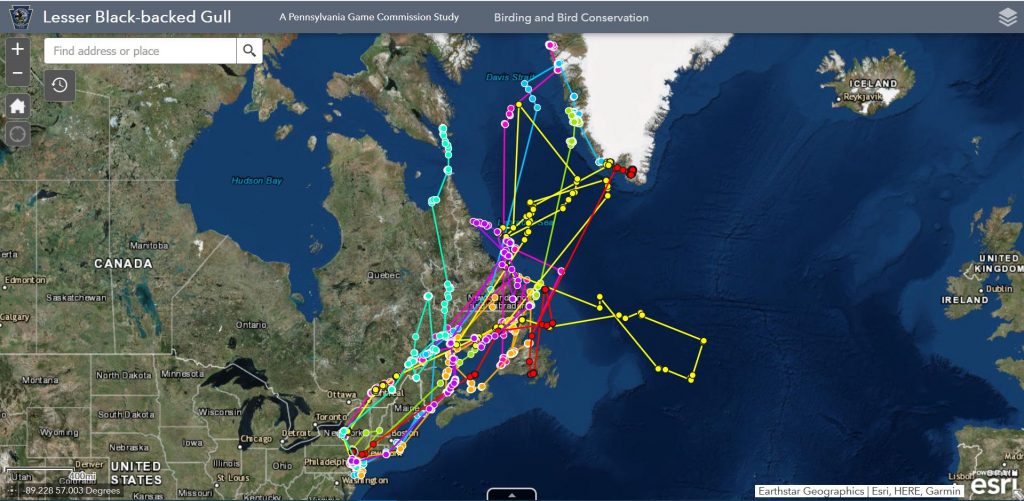
5 April 2019
In late March more than 440 lesser black-backed gulls congregated in a damp field in northeastern Pennsylvania — an exciting find because they used to be very rare in North America. Why are they here and where are they going? The Pennsylvania Game Commission is using satellite telemetry to find out.
Lesser black-backed gulls (Larus fuscus) are an Old World species that breeds in Iceland, northern Europe, Russia and Kazakhstan and spends the winter in Europe, Africa and coastal Asia. They were never seen in North America until one showed up in New Jersey in 1934. Slowly their wintertime numbers increased until they’re now considered non-regular winter visitors to North America’s Atlantic and Gulf Coasts. See the map below.

They still don’t breed in North America in numbers that count on that map. However, they might be thinking about it.
In 2007 a single lesser black-backed gull began breeding on Appledore Island Maine, paired with a female herring gull because there were no other lesser black-backed gulls around. (Lesser black-backed and herring gulls are closely related.)
Meanwhile their migration numbers through Pennsylvania are high enough that ornithologists began to wonder if lesser black-backed gulls are bothering to cross the Atlantic to breed. Are they going to Iceland? We would know that answer if we knew where the Pennsylvania flock was going.
Last spring the PA Game Commission attached satellite transmitters to nine adult gulls when they stopped over in Pennsylvania. The map of the gulls’ movements tells an interesting tale.

The satellite-tagged gulls don’t go to Europe. They stay in North America. Based on their sedentary lifestyle in June they seem to be breeding in Greenland and northeastern Canada.

Click here for the interactive Lesser Black-Backed Gull Telemetry map that zooms in and follows the gulls’ paths. (There’s more about the study here.)
Is there a breeding population of lesser black-backed gulls in North America now? This year we’ll watch again to find out where they’re going.
(photos from Wikimedia Commons, maps from PA Game Commission’s Lesser Black-backed Gull telemetry project; click on the captions to see the originals)
Very interesting – thanks!